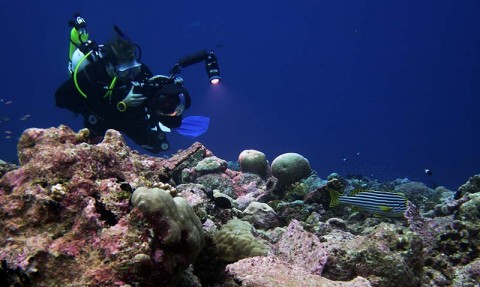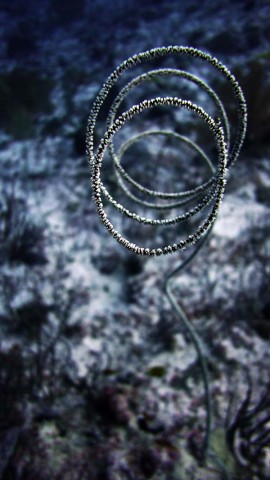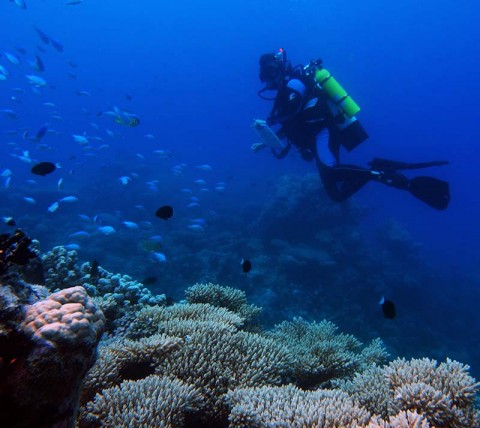BIOT Science Expedition 2014 - You can’t order the weather… Day 10
You can’t order the weather

Climatic shenanigans continued today. The squalls of yesterday developed into a consistent wail of wind into the morning. We managed to launch for the day’s planned dive in the lee of an obliging island but this ingenuity on our part only seemed to convince the storm that it hadn’t tried hard enough. On surfacing we were battered by the tempests less than gentle gusts and barged up and down by the jumping waves it had roused from the sea. After an entertaining recovery to the BIOT Research Vessel we conceded to the weather and spent the afternoon catching up on the growing pile of data and samples that needed processing from the last 10 days activities.

On the dive the beautifully calm clear waters below restored balance to the morning’s conditions above. Well worth risking the weather for the pleasing coralline vista sloping gently from the island to the depths. Shoals of triggerfish had their home amongst the whip corals in the deeper darker edges of the slope.

A deep cave revealed a host of lobster jostling away from the torchlight that disturbed the darkness of their retreat. In the shallows closer to the revealing light filtering down despite the turmoil above, large grouper paraded in between mounds of coral while groups of pastel painted parrotfish hurried about scraping their fodder from the stony seabed. Needless to say such an idyllic setting was still not sufficient to tempt us back into the storm for the afternoon. Tomorrow is another day. Until then I’ll let Melita explain a little more of her research.

“This is the first time I’ve surveyed reef fish in Chagos which makes it very exciting for me to be part of this expedition. I have long wanted to be here as I come from Kenya and so working in Chagos is highly relevant to the work I’m doing in the western Indian Ocean. I’ve been surveying fish in Tanzania, Mozambique, Comoros and Madagascar measuring the diversity of species on reefs and also their population abundance. I’m hoping that Chagos will provide me with a baseline for fish population abundance for the region because the reefs here have not had intense fishing like elsewhere. However Chagos did have a specific commercial line fishery for some reef species until the area was turned into a marine park in 2010. So it might be early days before we see populations of those species return to unfished populations levels.

The “fish team” do three things on a dive covering around 200-300m along the reef: we make a complete species inventory for 19 families, using photographs as a back up for identifying the tricky species; we do a 10 minute “long swim” to count big and elusive species like sharks, tunas, trevally, groupers and Napoleon wrasse, and then we do 50x 5m transects counting the numbers and sizes of a broad range of species that range from snappers to surgeon fish. One of the most exciting things I’ve seen so far is how big the coral trout grouper are – we are seeing 1 metre long males; this is the maximum size they reach! I’ve never seen this before and I’ve worked on this species in the Indo-Pacific since the 1980s.”
.jpg)

